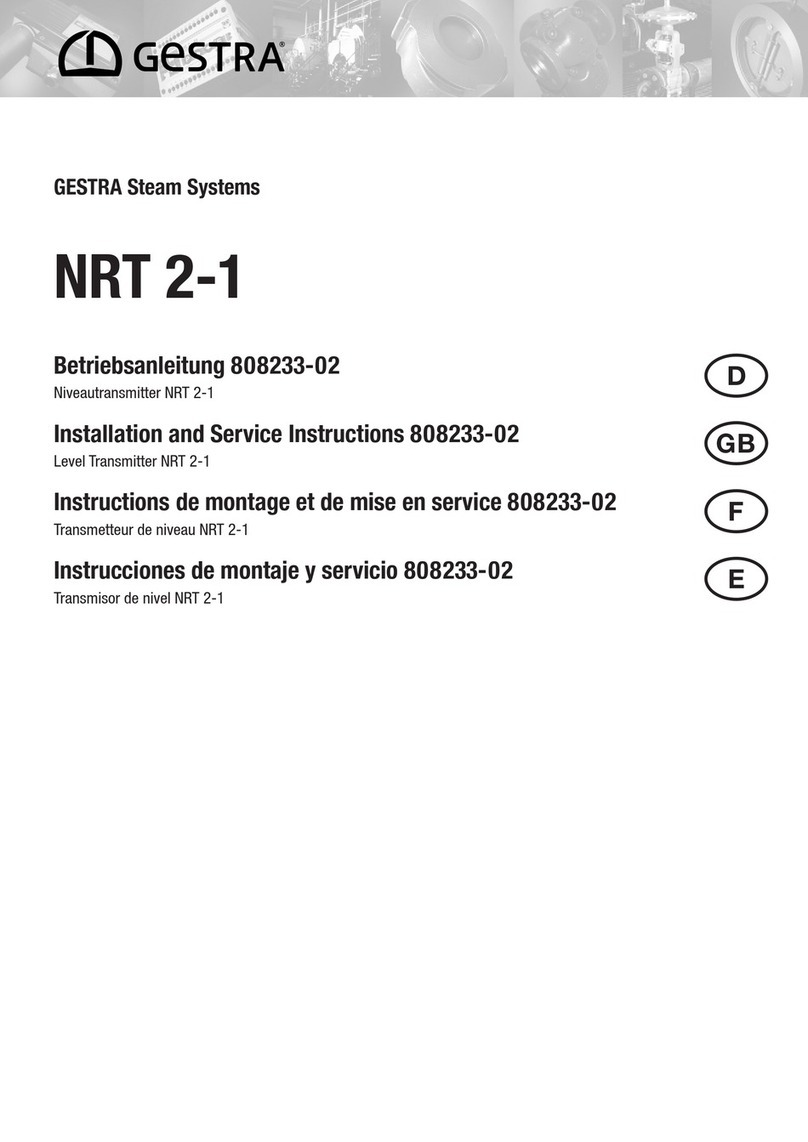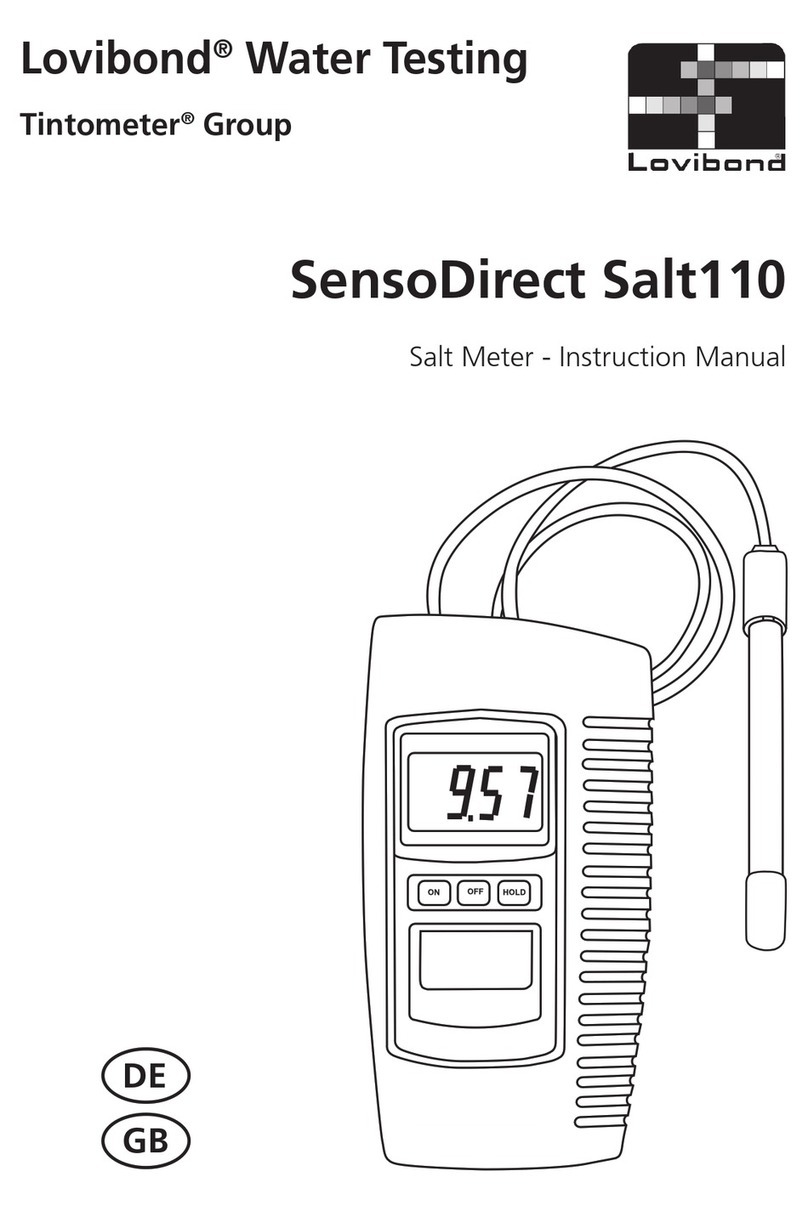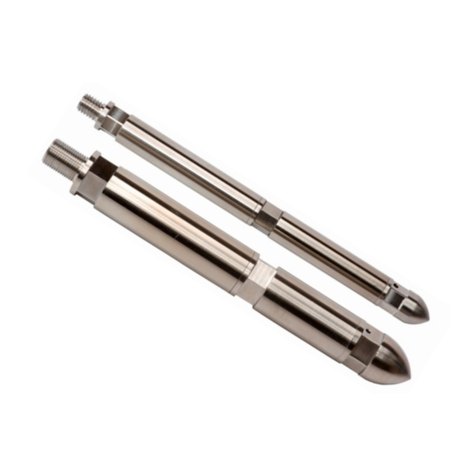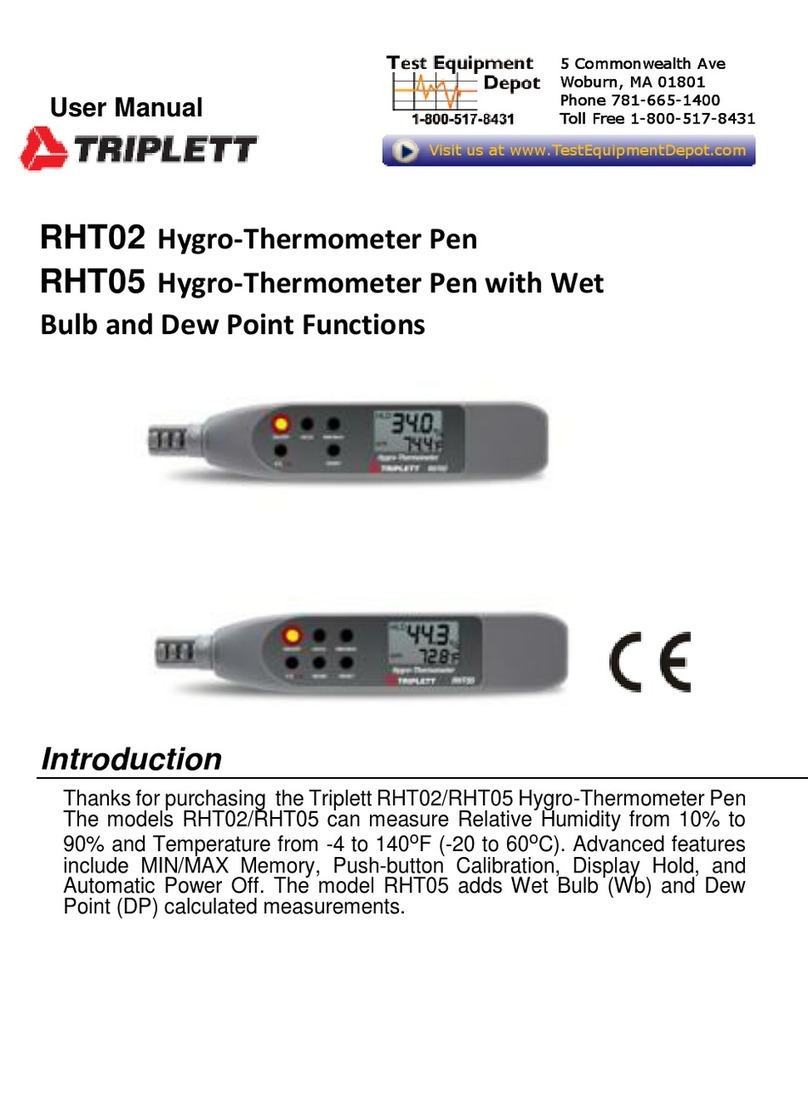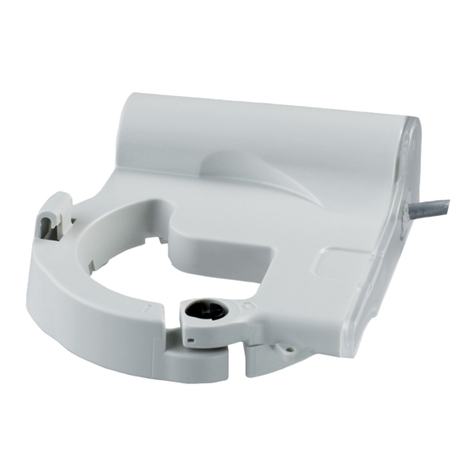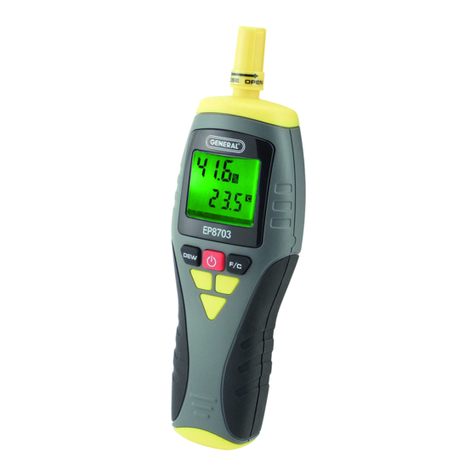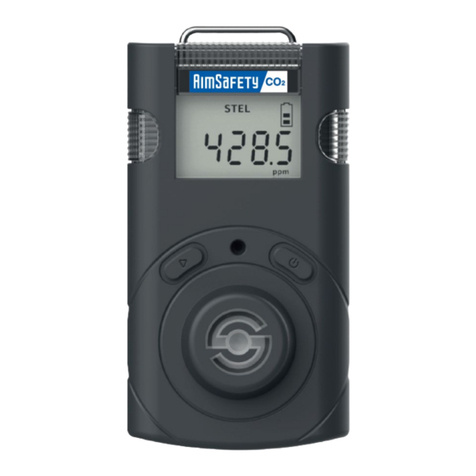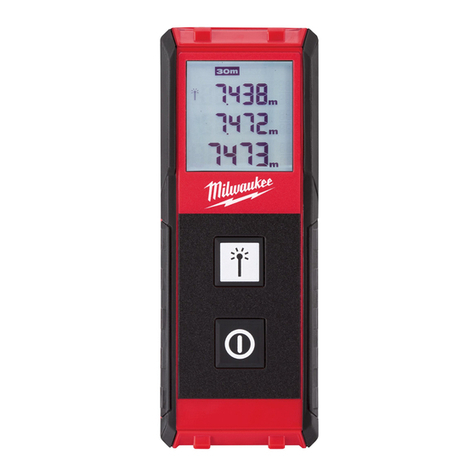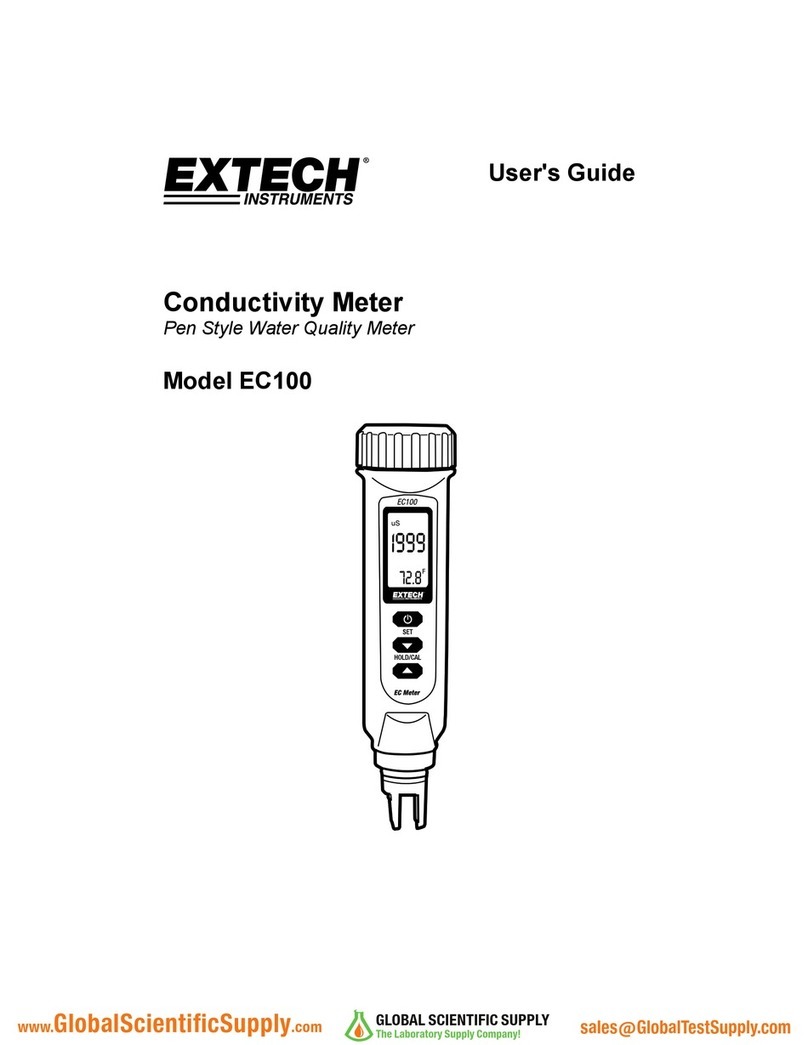GESTRA NRG 211-1 User manual

1
EN
English
Level Electrode
NRG 211-1
Original Installation Instructions
810425-05

2
Contents
Page
Important notes
Usage for the intended purpose...............................................................................................................4
Function..................................................................................................................................................4
Safety note..............................................................................................................................................4
Directives and standards
PED (Pressure Equipment Directive) ........................................................................................................5
LV (Low Voltage) Directive and EMC (Electromagnetic Compatibility)........................................................5
ATEX (Atmosphère Explosible) .................................................................................................................5
Note on the Declaration of Conformity / Manufacturer's Declaration ...................................................5
Technical data
NRG 211-1 .............................................................................................................................................6
Scope of supply ......................................................................................................................................7
Name plate / marking ............................................................................................................................7
Installation
Dimensions NRG 211-1...........................................................................................................................8
Key .........................................................................................................................................................8
Welding standpipe...................................................................................................................................9
NRG 211-1..............................................................................................................................................9
Tools .......................................................................................................................................................9
Examples of installation ........................................................................................................................10
Key .......................................................................................................................................................10
Electrical connection
Tools .....................................................................................................................................................11
NRV 2-30 ..............................................................................................................................................12
Wiring diagram .....................................................................................................................................12
NRV 2-30, wiring connecting terminals .................................................................................................13

3
Contents
Page
- continued -
Commissioning procedure
Applying supply voltage.........................................................................................................................13
Checking switching functions................................................................................................................13
Key .......................................................................................................................................................13
Troubleshooting
Indication, diagnosis and remedy ..........................................................................................................14
Checking voltage...................................................................................................................................14
Checking temperature sensor ...............................................................................................................15
Resistance values .................................................................................................................................16
Replacing electronic module .................................................................................................................16
Maintenance
Safety note............................................................................................................................................17
Checking ceramic insulator ...................................................................................................................17
Removing and disposing of the level electrode
Removing and disposing of level electrode NRG 211 .............................................................................17

4
Important notes
Usage for the intended purpose
The level electrode NRG 211-1 is designed for measuring the water level in condensate lines.
In conjunction with level switch NRS 2-4 the electrode can be used as max. limit switch with high
level alarm.
Function
The level electrode together with the electronic module NRV 2-30 works according to the capacitance
measurement principle, translating the level changes into level-dependent current signals.
The electrode is self-monitoring, i. e. a fault in the insulating seal will cause a malfunction alarm.
In addition, a defined switching signal is given when the fluid reaches 395 °C because for physical
reasons the level cannot be determined exactly in this temperature range.
The level electrode works with the level switch NRS 2-4 to detect the max. limit and raise a high level
alarm. This equipment combination can be used as part of a controlled draining system in power
plants.
The electrode with welding standpipe is installed in vertical pipes.
Safety note
Danger
When loosening the electrode steam or hot water might escape!
This presents the risk of severe scalding all over the body!
It is therefore essential not to dismantle the electrode unless the boiler pressure is veri-
fied to be 0 bar.
The electrode becomes hot during operation.
Risk of severe burns to hands and arms.
Before carrying out installation and maintenance work make sure that the equipment is
cold.
Attention
The name plate specifies the technical features of the equipment. Do not commission or
operate any item of equipment that does not bear its specific name plate.
The equipment must only be installed, wired and commissioned by qualified and competent staff.
Retrofitting and maintenance work must only be performed by qualified staff who - through adequate
training - have achieved a recognised level of competence.

5
Directives and standards
ATEX (Atmosphère Explosible)
According to the European Directive 2014/34/EU the equipment must not be used in explosion-risk
areas.
Note on the Declaration of Conformity / Manufacturer's Declaration
For details on the conformity of our equipment according to the European Directives see our Declaration
of Conformity or our Declaration of Manufacturer.
The current Declaration of Conformity / Declaration of Manufacturer are available in the Internet under
www.gestra.com documents
or can be requested from us.
PED (Pressure Equipment Directive)
The equipment fulfils the requirements of the Pressure Equipment Directive 2014/68/EU and can be
used for fluids of group 2.
The equipment has the CE marking on the name plate.
LV (Low Voltage) Directive and EMC (Electromagnetic Compatibility)
The equipment meets the requirements of the Low Voltage Directive 2014/35/EU and the EMC
Directive 2014/30/EU.

6
NRG 211-1
Limiting conditions for level electrode
Material of flange/welding standpipe 1.5415 1.7380 1.4922
Admissible service pressure [barg] 320 200 320 200 320 230
[psig] 4642 2901 4642 2901 4642 3336
Admissible service temperature [°C] 120 450 120 500 120 550
[°F] 248 842 248 932 248 1022
Mechanical connection
Special flange PN 320 with welding standpipe for pipes DN ≤ 100 with tee-piece or
for pipes DN ≥ 100 with lateral bore
Material of wetted parts
Protection tube up to 500 °C 1.0305
Protection tube up to 550 °C 1.7380
Strainer 1.4571
Insulating seal of electrode Special ceramic
Flange seal 1.4541/silver
ph value
Max. admissible: 10
Temperature sensor
Pt 1000
Weight
Level electrode approx. 5.6 kg
Welding standpipe approx. 4.5 kg
Electronic module NRV 2-30
Supply voltage
12 V DC
Output
≥ 0 – ≤ 10 V DC
Enclosure
Terminal box: made of aluminium, enamel finish
Electrical connection
Six-pole connector, cable glands Pg 11
Protection
IP 54 to EN 60529
Max. admissible ambient temperature
70 °C
Technical data

7
Scope of supply
NRG 211-1
1 Level electrode NRG 211-1
1 Gasket with serrated faces
1 Installation manual
Technical data
Name plate / marking
Equipment designation
Safety note
Disposal note
CE Marking
Manufacturer
Pressure rating, flanged connec-
tion, material number, protection
Fig. 1
Material number
320 bar/120°C
200 bar/450°C
T amb=70°C (158 °F)
Mat.-Nr.:
Pmax
Tmax
PN 320 DN50 1.5415 IP 54
GESTRA AG D-28215 Bremen
Betriebsanleitung beachten
See installation instructions
Voir instructions de montage
Application
range
- continued -

8
Installation
Dimensions NRG 211-1
~118
~80
334.5
478
97
∅43.5
Fig. 2 7
8
6
0
9
5
3
1
2
Key
1Transit protection
2Fixing screw
3Flange
7Strainer
8Protection tube
9Temperature sensor
4Groove for gasket
5Stuffing box
6Measuring electrode
4
0Expansion bolt
aTerminal box
in electronic
module
a

9
Attention
nHandle level electrode with care. Do not let if fall down.
nDo not subject electrode rod to physical shocks..
nUse only the supplied joint ring!
nUse high-temperature lubricant (e. g. Dag 156) for the expansion bolt !
nDo not lag electrode body above the hexagonal section!
nIf the the level electrode is removed for inspection work make sure it is stored in a
vertical position.
Installation
Welding standpipe
Note
nTo connect the equipment to pipes (tee-pieces) with DN ≤ 100 use full-penetration butt
welding 22 DIN 2559.
nFor larger pipes the welding standpipe can be introduced through a lateral penetration
and then be welded in place.
nThe joint ring has serrated faces and silver coated rings at both ends which must not
be removed.
NRG 211-1
1. Check seating surfaces. Clean end flange facings.
2. Insert joint ring into the groove of the welding standpipe.
3. When putting the level electrode in place make sure that the connector at the terminal box points
downwards.
4. Tighten expansion bolt 0in diagonally opposite pairs with a torque of 70 Nm .
5. Tighten expansion bolt 0in diagonally opposite pairs with a torque of130 Nm.
6. Remove the fixing screw 2of the transit protection 1.
Weld standpipe inclined upwards by at least 5° - 10° onto vertical pipe to ensure that the standpipe
can completely empty if the level falls. Make sure that the marking TOP is on top. Fig. 3.
Danger
nDuring the welding process or post weld treatment of the standpipe the temperature
of the flange seating surface must not exceed 350 °C (danger of scalding).
Tools
nOpen-end spanner A. F. 27, DIN 3110, ISO 3318
- continued -

10
Installation
Examples of installation
b Provided by customer
c Welding standpipe (GESTRA)
d Marking TOP
Key
d
DN ≤ 100/4"
≈12
∅63.5
≈24
∅63.5
DN > 100/4"
b
b
d
c
c
Fig. 3
- continued -
≥ 5° - 10°
5° - 10°

11
Electrical connection
Connection of level electrode
To connect the equipment use screened multi-core control cable with a min. conductor size 0.5 mm²,
e. g. LiYCY 4 x 0.5 mm², max. length 500 m.
Connect only one screen to the NRS 2-4. Wire terminal strip in accordance with the wiring diagram.
Fig. 5
The screen must not make any other electrical contact.
nPlease follow the instructions given in the installation manual for NRS 2-4!
nMake sure that connecting cables leading to the level electrode are segregated and
run separately from power cables.
Attention
Tools
nScrewdriver, size 6 mm, completely insulated according to VDE 0680

12
Electrical connection
NRV 2-30
e
f
Wiring diagram
3
6
2
5
1
4
UM
CM
321
4
5
6Pt 1000
NRG 211
NRV 2-30
g h i j
k
l
l
m
n
n
o
p
q
Fig. 4
Fig. 5
- continued -

13
Electrical connection
NRV 2-30, wiring connecting terminals
1. Turn up the retaining bracket eand detach the upper part of the connector ifrom the level
electrode.
2. Unscrew screw jand press the contact block k out of the upper part of the connector i.
3. Loosen cable gland h .
4. Pull cable gthrough cable gland h, ring, joint ring and upper part of connector i.
5. Wire connecting terminals in the contact block kaccording to Fig. 5 .
6. Press the contact block linto the upper part of the connector i .
7. Re-insert screwjin the hole and tighten it. In doing so the contact block kis fixed to the upper
part of the connector i.
8. Fasten the cable gland h.
9. Plug the upper part of the connector i into the lower part fand secure it in place by turning
down the retaining bracket e.
eRetaining bracket
fLower part of connector
gCable
hCable gland
iUpper part of the connector
jScrew
Key
kContact block
lSupply voltage 12 V DC
mMeasuring voltage 1 – 10 V DC
nFixing screws for electronic module
oTerminal lugs
pConnection for temperature sensor
Commissioning procedure
Note
The level electrode NRG 211-1 and the level switch NRS 2-4 (MAX) form a functional unit
and must only be operated and checked together.
For additional information on commissioning procedures and troubleshooting refer to the
installation manual of the level switch NRS 2-4.
Please check that the level electrode is wired in accordance with the wiring diagram (Fig. 5) and
switch on the supply voltage of the level switch NRS 2-4.
Applying supply voltage
Check the switching function "High level" (MAX). For this purpose raise the water level in the tank
above the preset high level. The LED of the level switch NRS 2-4 that indicates "High level" (MAX) must
light up and the corresponding function in the secondary circuit must be triggered.
Checking switching functions
qFor resistance measurement
Temperature sensor
(for measurement remove
conductors)
- continued -

14
Indication, diagnosis and remedy
Malfunctions indicated by level switch NRS 2-4
Display Error Diagnosis and remedy
LED Power ON
not illuminated. No supply voltage. Switch on supply voltage. Check all electrical
connections.
LED Level
electrode
defective and
LED High
Level (MAX)
illuminated
The fixing screw of the level electrode has
not been removed., Remove the fixing screw.
Level electrode defective
(insulating seal, stuffing box)
Measure the voltage of the NRS 2-4 across C18/A18.
Measure the voltage of the NRG 211-1 across
terminals 2 and 3. If the voltage ≥ 9 V replace level
electrode.
LED Malfunc-
tion in cableil-
luminated
Connecting cable to level electrode defec-
tive (short circuit, interruption)
Measure the voltage of the NRS 2-4 across C18/A18.
Measure the voltage of the NRG 211-1 across
terminals 2 and 3. If the voltage ≤ 1 V check the
connecting cables and the wiring.
Attention
Before carrying out the fault diagnosis please check:
Supply voltage:
Is the level electrode supplied with the voltage specified on the name plate?
Wiring:
Is the wiring in accordance with the wiring diagram?
Danger
The terminal strip of the level switch is live during operation.
This presents the danger of electric shock!
Always cut off power supply to the equipment before mounting, removing or connecting
the terminal strip and before unplugging the 19" slide-in unit!
Troubleshooting
Check the supply and measuring voltages of the level electrode. You can measure the voltages on the
level electrode or the level switch. Fig. 5
Checking voltage
Voltages Diagnosis
12 V DC Supply voltage
≤ 0 V – 1 V DC Connecting cable to level electrode defective (short circuit, interruption)
= 1 V – 4 V DC Level electrode exposed, fluid temperature ≥ 395 °C
= 4 V – 7 V DC Level electrode submerged, HIGH level
≥ 9 V DC Level electrode defective (insulating seal, stuffing box)

15
Troubleshooting
HIGH level exceeded, equipment does not work
Display Error Remedy
Only LED
Power ON
illuminated
Level electrode not submerged.
Measure the voltage of the NRS 2-4 across C18/A18.
Check installation and measure the voltage of the
NRG 211-1 across terminals 2 and 3. Check installa-
tion of level electrode and, if necessary, change it.
Level switch defective.
Measure the voltage of the NRS 2-4 across C16/A18
(supply voltage of level electrode). If no voltage can
be measured replace the level switch.
Electronic module defective.
Measure the voltage of the NRS 2-4 across C18/A18.
Measure the supply voltage of the NRG 211-1 across
terminals 1and 3 and the measuring voltage across
terminals 2 and 3. Replace electronic module if
supply voltage is 12 V DC but no measuring voltage
can be measured.
Temperature sensor defective.
Measure the measuring voltage of the NRG 211-1
across terminals 2 and 3. If you measure a volt-
age of 1 - 4V check the temperature sensor. If the
temperature sensor is defective replace the level
electrode.
Indication, diagnosis and remedy
Checking temperature sensor
1. Turn up the retaining bracket eand detach the upper part of the connector ifrom the level
electrode. Fig. 4
2. Unscrew the four cover screws and detach cover from terminal box.
3. Detach the connecting lines of the temperature sensor pand connect an ohmmeter q. Fig. 5
4. Measure the resistance value and compare the result with the water temperature in table 1.
If necessary, interpolate intermediate values.
5. If the values deviate replace the level electrode with a new one.
6. If the resistance value corresponds to the temperature, re-attach the connecting line to the
temperature sensor p.
7. Fit the cover of the terminal box in place and tighten the four cover screws.
8. Plug the upper part of the connector i into the lower part fand secure it in place by turning
down the retaining bracket e.
- continued -
- continued -

16
Troubleshooting
Resistance values
°C 0 10 20 30 40 50 60 70 80 90 100 Ω/°C1)
0 1000.0 1039.0 1077.9 1116.7 1155.4 1194.0 1232.4 1270.7 1308.9 1347.0 1385.0 3.85
100 1385.0 1422.8 1460.6 1498.2 1535.7 1573.2 1610.1 1647.6 1684.7 1721.6 1758.4 3.73
200 1758.4 1795.1 1831.7 1868.2 1904.6 1940.8 1977.0 2013.0 2048.8 2084.6 2120.3 3.61
300 2120.3 2155.8 2191.3 2226.6 2261.8 2296.9 2331.9 2366.7 2401.5 2436.1 2470.6 3.50
400 2470.6 2505.0 2539.3 2573.4 2607.5 2641.4 2675.2 2708.9 2742.5 2776.0 2809.3 3.38
500 2809.3 2842.6 2875.7 2908.7 2941.6 2974.3 3007.0 3039.5 3072.0 3104.3 3136.5 3.27
600 3136.5 3168.6 3200.5 3232.4 3264.1 3295.7 3327.2 3358.6 3389.9 3421.0 3452.1 3.15
700 3452.1 3483.0 3513.8 3544.5 3575.1 3605.5 3635.9 3666.1 3696.2 3726.2 3756.1 3.04
800 3756.1 3815.5 3815.5 3845.0 3874.5 3903.8 – – – – – 2.95
1) Mean values of 100 °C range
1. Turn up the retaining bracket eand detach the upper part of the connector ifrom the level
electrode. Fig. 4
2. Unscrew the four cover screws and detach cover from terminal box.
3. Detach all wires from the terminal lugs.
4. Unscrew fixing screws nand remove electronic module. Fig. 5
5. Insert new electronic module and screw in fixing screws n.
6. Re-attach all wires to the terminal lugs.
7. Fit the cover of the terminal box in place and tighten the four cover screws.
8. Plug the upper part of the connector i into the lower part fand secure it in place by turning down
the retaining bracket e.
Replacing electronic module
Table 1
- continued -

17
Note
nIf the level electrode is removed for inspection work make sure it is stored in a
vertical position.
Danger
When loosening the level electrode steam or hot water might escape!
This presents the risk of severe scalding all over the body!
It is therefore essential not to dismantle the electrode unless the boiler pressure is
verified to be 0 bar.
The level electrode becomes hot during operation.
Risk of severe burns to hands and arms.
Before carrying out installation and maintenance work make sure that the equipment is
cold.
The equipment must only be installed, wired and commissioned by qualified and competent staff.
Retrofitting and maintenance work must only be performed by qualified staff who - through adequate
training - have achieved a recognised level of competence.
Maintenance
Safety note
After two years at the latest check the ceramic insulator of the measuring electrode 7for cracks.
To do so you have to remove the electrode. The equipment may only be installed and removed by quali-
fied personnel.
Loosen the retaining ring for the strainer 7Fig. 2 and remove the strainer. If there are visible signs of
cracks in the insulator replace the level electrode with a new one.
If you cannot detect any cracks put the strainer 7back in place and secure it by means of the retaining
ring. Re-install the electrode. Observe the note in chapter "Installation" on page 9.
Checking ceramic insulator
Removing and disposing of the level electrode
Removing and disposing of level electrode NRG 211
1. Switch off supply voltage.
2. Turn up the retaining bracket eand detach the upper part of the connector ifrom the level
electrode. Fig. 4
2. Before removing the equipment make sure that it is neither hot nor under pressure.
For the disposal of the equipment observe the pertinent legal regulations concerning waste disposal.
If faults occur that are not listed above or cannot be corrected, please contact our service centre or
authorized agency in your country.

18
For your Notes

19
For your Notes

20
810425-05/01-2019cm (808456-05) · GESTRA AG
·
Bremen
·
Printed in Germany
GESTRA AG
Münchener Straße 77
28215 Bremen
Germany
Telefon +49 421 3503-0
Telefax +49 421 3503-393
E-mail [email protected]
Web www.gestra.de
Agencies all over the world: www.gestra.de
Table of contents
Other GESTRA Measuring Instrument manuals

GESTRA
GESTRA SRL 6-60 User manual
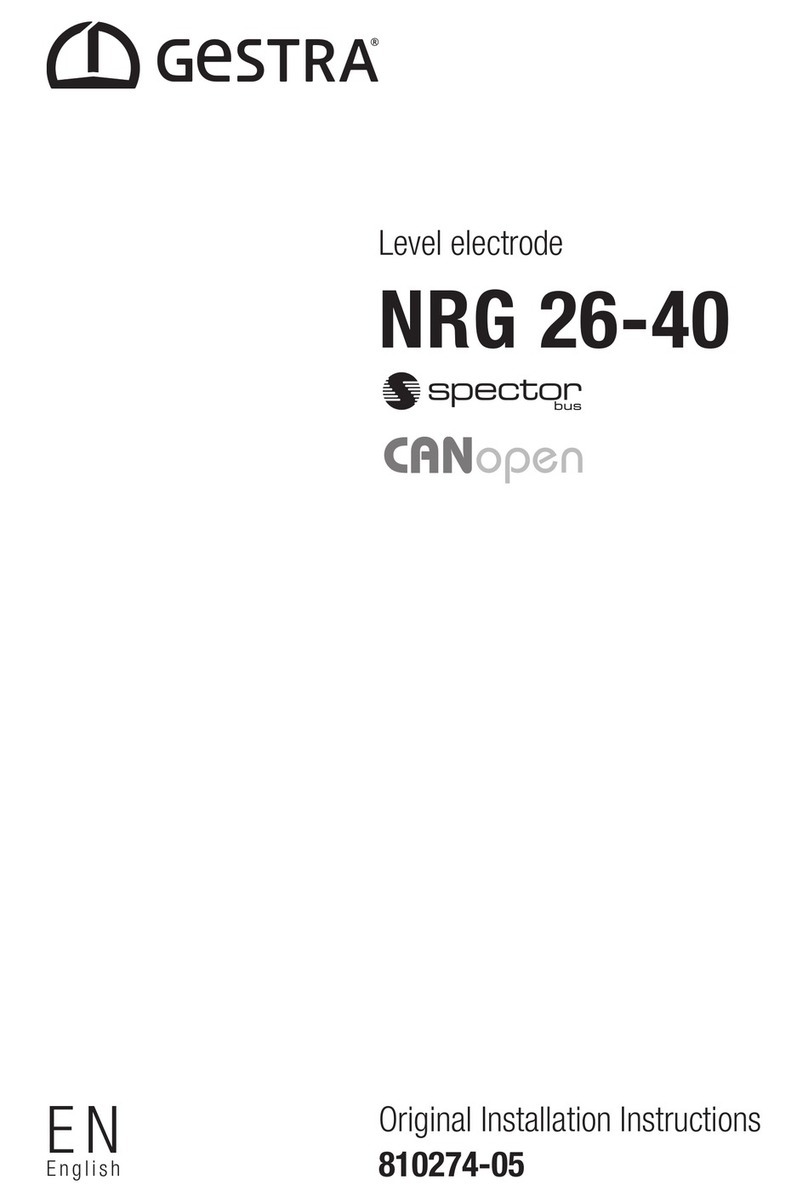
GESTRA
GESTRA NRG 26-40 User manual

GESTRA
GESTRA LRG 16-4 Installation instructions
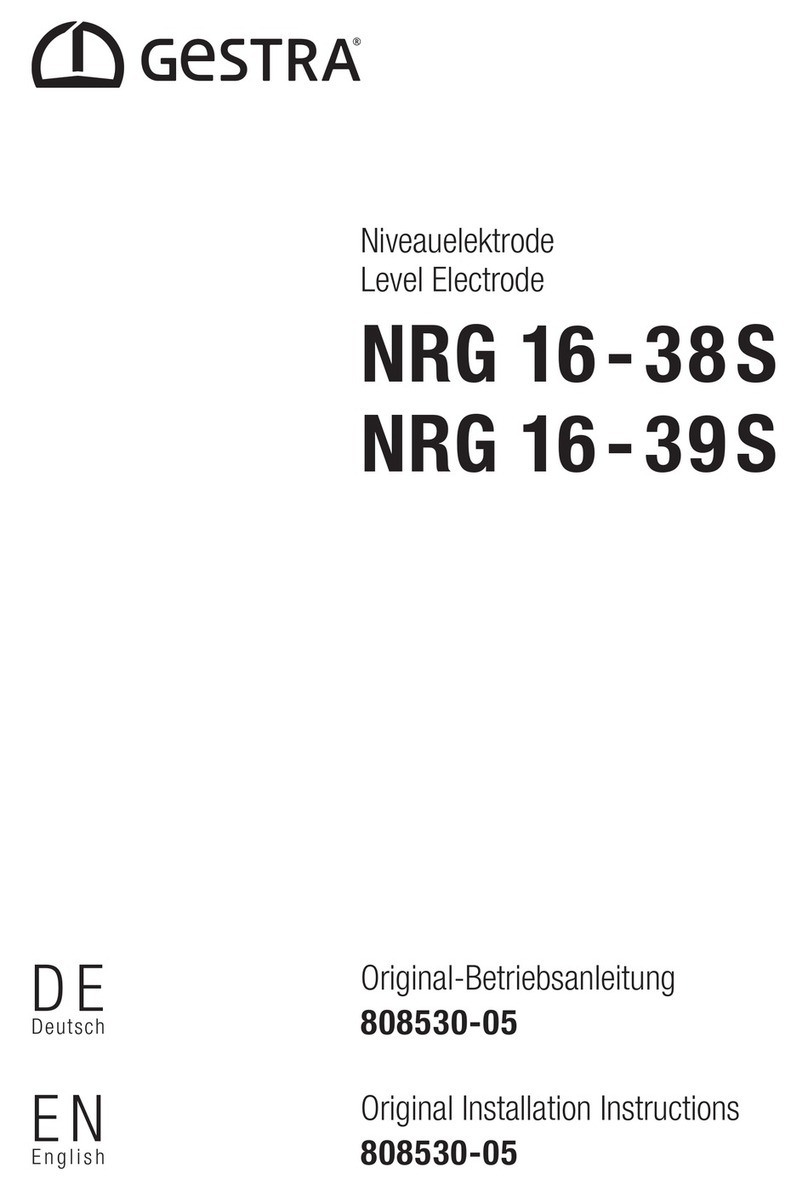
GESTRA
GESTRA NRG 16-38 S User manual
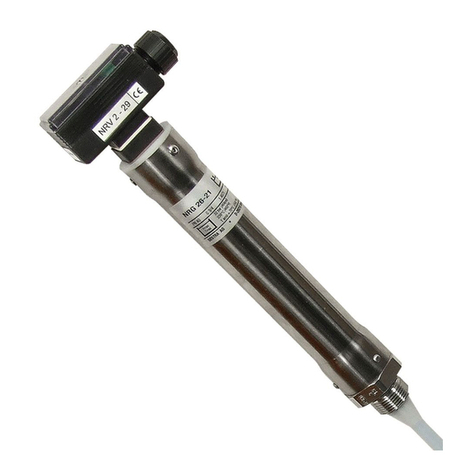
GESTRA
GESTRA NRG 26-21 Manual
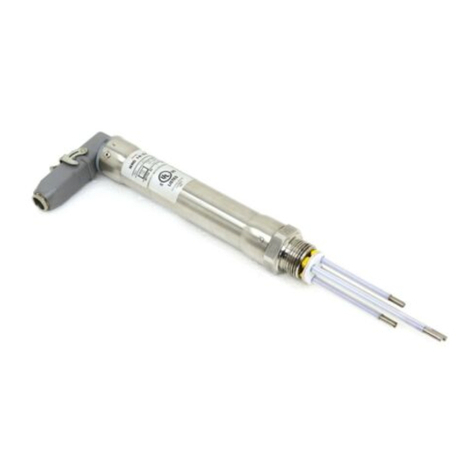
GESTRA
GESTRA NRG 10-52 User manual
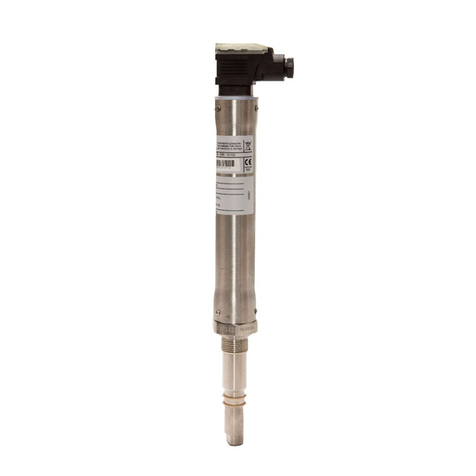
GESTRA
GESTRA NRG 16-51 User manual

GESTRA
GESTRA LRG 16-40 User manual
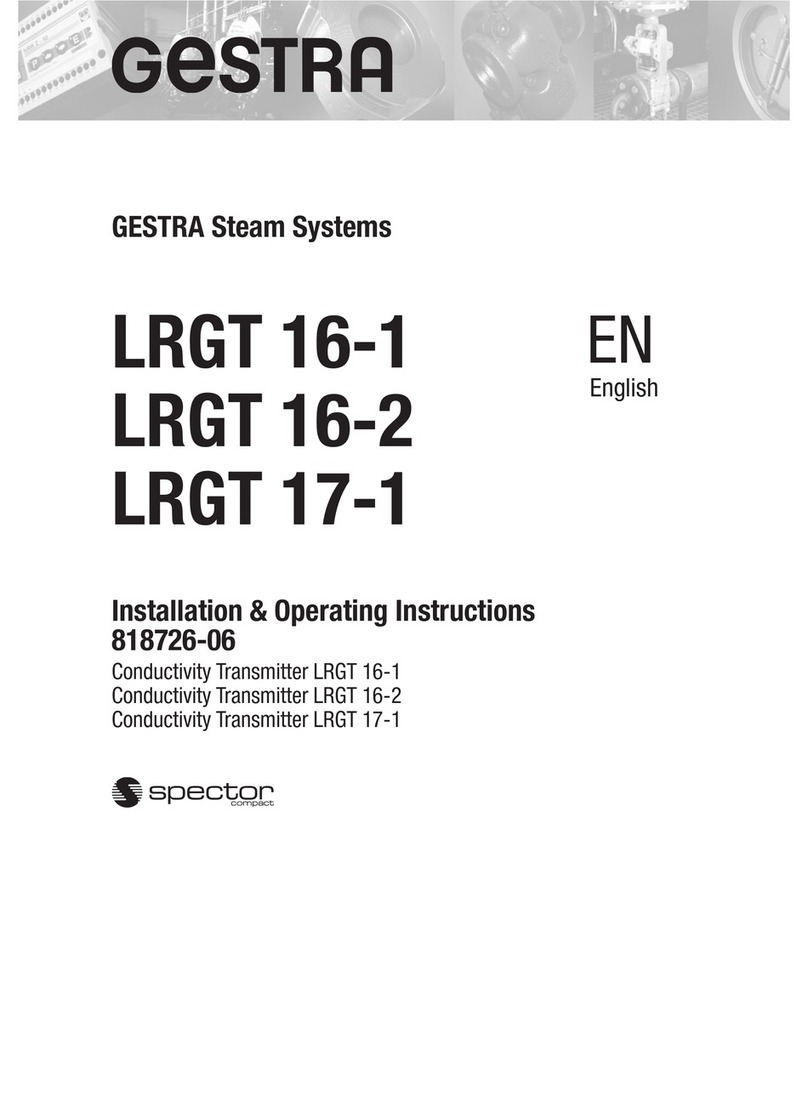
GESTRA
GESTRA LRGT 16-1 Manual
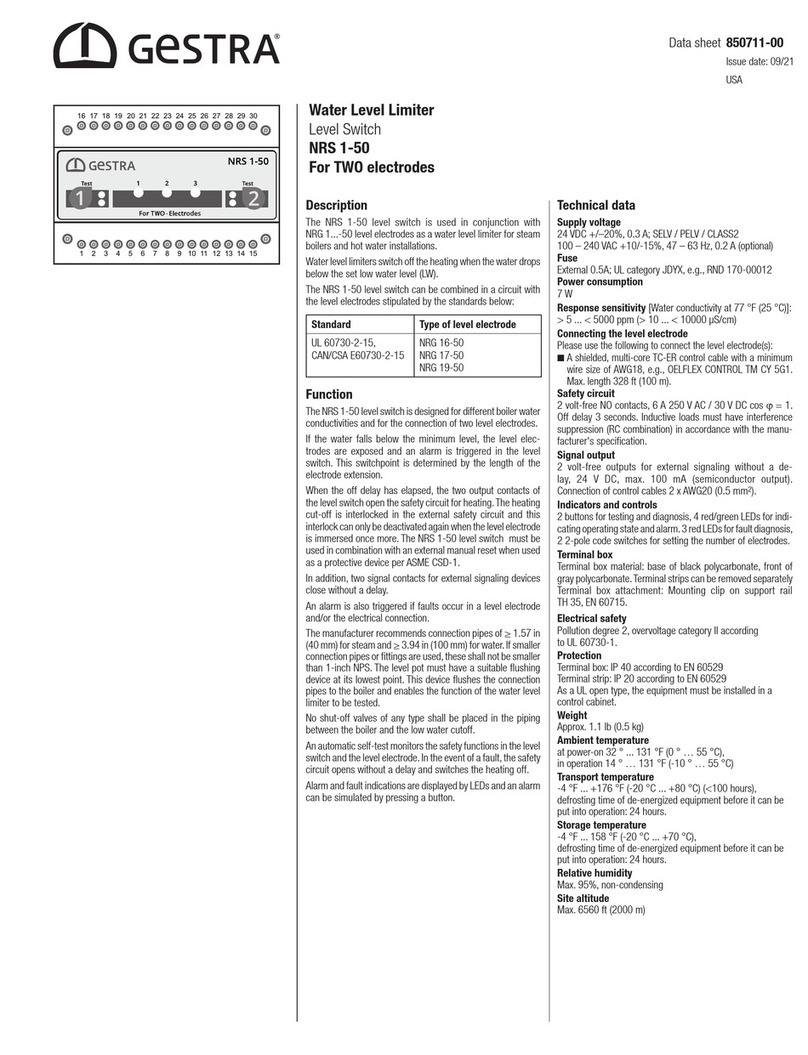
GESTRA
GESTRA NRS 1-50 User manual
Popular Measuring Instrument manuals by other brands
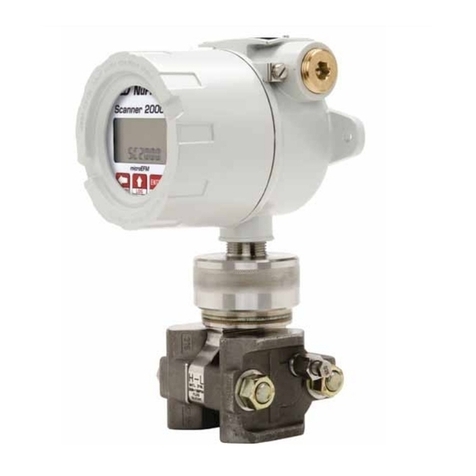
Cameron
Cameron Scanner 2000 microEFM Hardware user manual
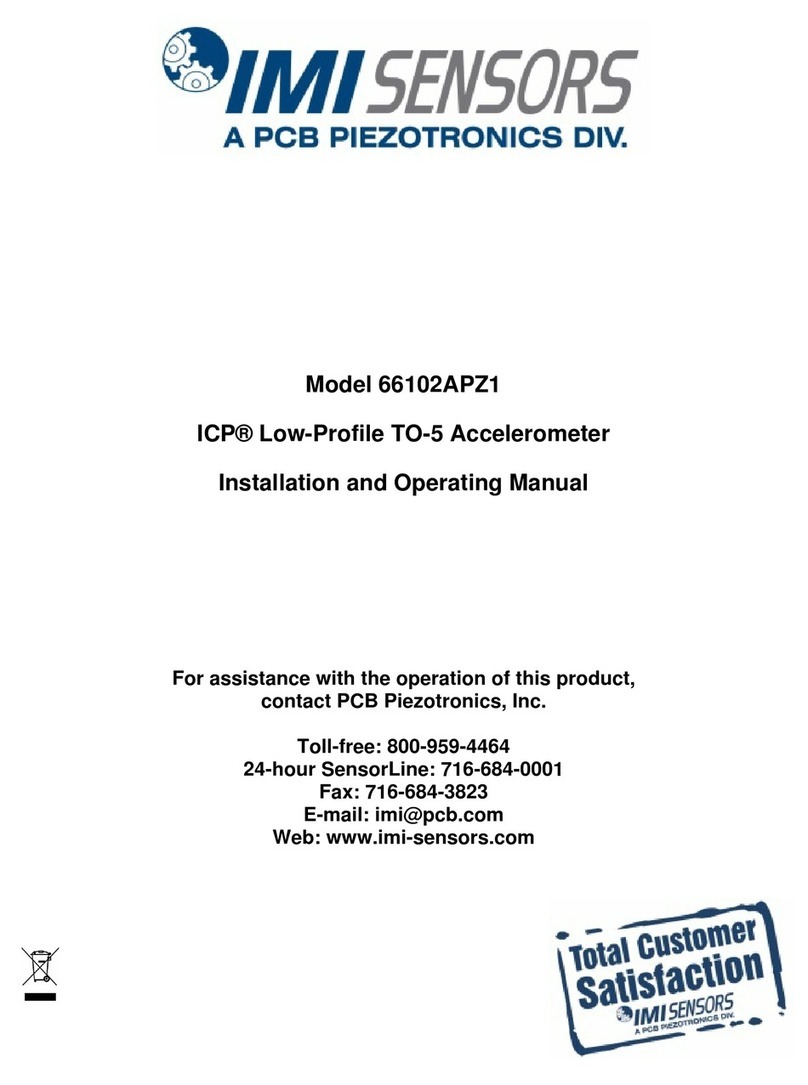
PCB Piezotronics
PCB Piezotronics IMI SENSORS 66102APZ1 Installation and operating manual
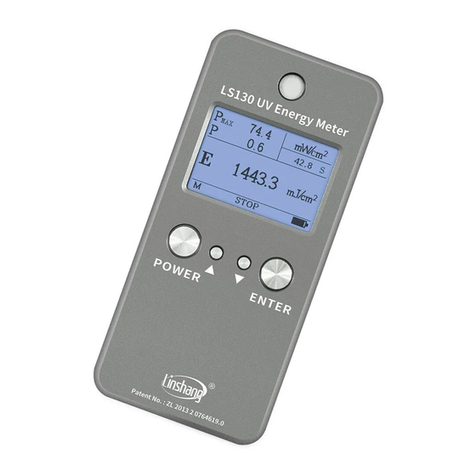
LINSHANG
LINSHANG LS130 user manual
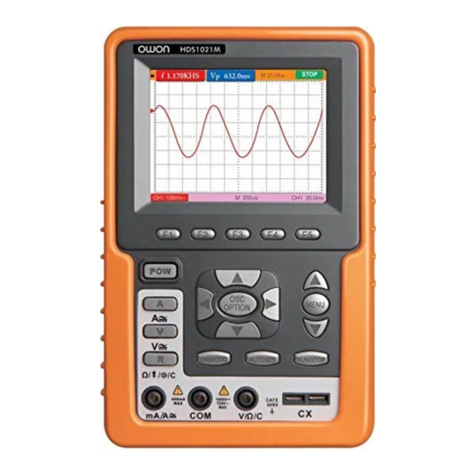
Owon
Owon Lilliput HDS1021M user manual

Panametrics
Panametrics GF868 Programming manual
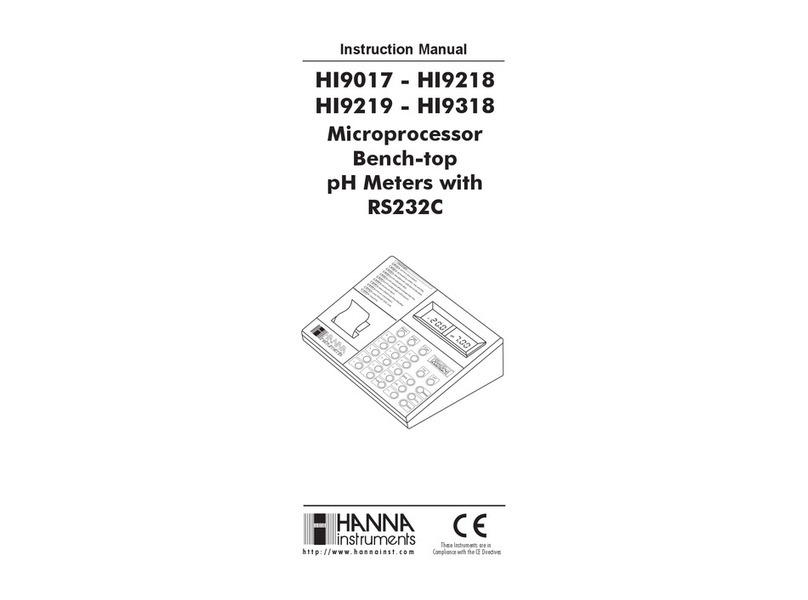
Hanna Instruments
Hanna Instruments HI 9219 instruction manual

